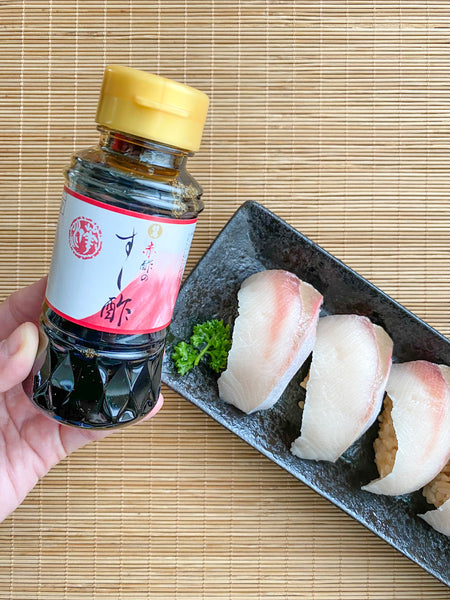Sushi Rice Vinegars: Kome-zu (Rice Vinegar) vs Akazu (Red Vinegar)

A quintessential component to mastering the art of sushi is learning how to prepare shari (sushi rice) so that each grain is distinct, supple, and individually flavored. Seasoning sushi rice requires choices to be made about the ingredients used, the quantities of each, and the timing of cooking and mixing -- all of which determine how well the flavors of the rice and seafood interplay.
One such choice is deciding which vinegar to use. In the sushi world, there are two primary types of vinegar: kome-zu or akazu. Both are unique in their own ways and complement different styles of sushi preparation.

Kome-zu (Rice Vinegar)
Kome-zu is made from fermented rice and has a mild, mellow flavor. When used to season sushi rice, it creates white shari (white sushi rice), which is the variety of shari found in most sushi restaurants. With a pale yellow color, kome-zu doesn’t affect the color of white shari, leaving it bright white.

Akazu (Red Vinegar)
Akazu is produced from sake lees, the yeast slurry byproduct formed when making sake, rather than rice itself. It was popularized during the Edo period, when rice and sake were considered precious and typically reserved for the upper classes. Meanwhile, akazu was cheaper to produce, and thus spread throughout Japan as a cost-effective alternative.
In an ironic twist, akazu has become more expensive to produce than kome-zu due to its long fermentation period of three to four years. In contrast, kome-zu takes about one year to produce. As a result, akazu is produced in small quantities by artisans, making it difficult to source. Nonetheless, it continues to be the vinegar of choice for traditional Edomae-zushi and can be found in high-end restaurants throughout Japan.
With a reddish-brown color, akazu dyes rice slightly red, creating red shari (red sushi rice). Naturally sweet, akazu brings a flavorful, refreshing, and umami taste to red shari.
About the author:

Britney Budiman
Britney Budiman (@booritney) is a writer, minimalist, aspiring effective altruist, and runner-in-progress with a penchant for saying “yes.” Previously, she has worked in Cambodia at a traditional arts NGO, in Brazil as a social sciences researcher, and in San Francisco at a housing start-up. She currently lives in the countryside of Kagoshima, Japan, where she teaches English. Her favorite thing in the world is good conversation.




